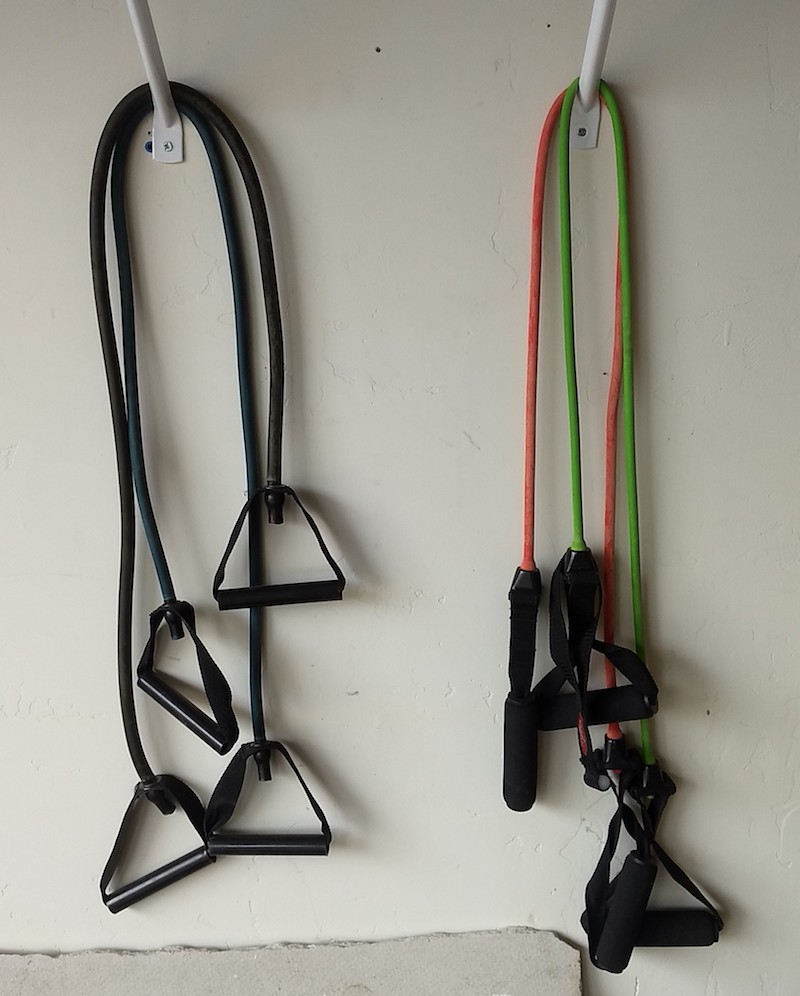 |
 |
 |
 |
 |
 |
 |
 |

|
 |
|
Motivation for cycling: How to get & stay motivated during the coronavirus (COVID 19) All physical activity is good! by Coach John Hughes John Hughes is the author of Anti-Aging: 12 Ways to You Can Slow the Aging Process and of the book Distance Cycling. He has written 40 articles on training, nutrition, psychology and medical issues for RoadBikeRider.com. More about Coach Hughes. As of this writing many states are starting to relax stay at home recommendations / requirements. However, many opportunities for exercise are still limited and many of us continue to worry about exposure to COVID 19. Colorado where I live is shifting from Stay at Home to Safer at Home. In a recent column I discussed how you lose fitness through inactivity, what you can do now to slow the loss of fitness and how to regain fitness. A number of readers responded with “How do I stop looking at the screen?”, “How do I get off the coach?” Etc.Why do you exercise?
Motivation is a combination of intrinsic and extrinsic factors. Overall good health, personal fitness and endorphins are examples of intrinsic factors. Group activities, competition and your doctor are examples of extrinsic motivation.
Explore your motivation with the following questions:
Once you’ve explored your answers to these questions, change your internal dialogue to be more intrinsically focused about exercise. When you think about exercising think about what it does for you personally. What are your impediments to exercising?
Which of these factors are demotivating for you? For more see Why Exercise Can Be Hard to Get Right Now in the Washington Post. Key points Family first. One of my clients reported he didn’t do many of the workouts last week because he was with his new grandson. Right on! Cut yourself some slack. One of the most important things to do right now is not to beat yourself up because you’re slacking off.
Variety. Equally important is broadening what you do to include all kinds of activities. My neighborhood has dirt roads, which provide variety and have low traffic. Small amounts count. You don’t have to exercise for an hour or more at a time. Ride for half an hour, spend twenty minutes doing chores like vacuuming and mowing the lawn, go for a half-hour walk after dinner, stretch for 10 minutes watching the tube and you have ninety minutes of activity for the day. What’s fun? You’re more likely to exercise if you do something really fun. What would you enjoy that’s still exercise. My wife is gardening. You have time now to wrestle with the kids or play fetch with your dog. Or? Act like it’s winter. Forget about how many miles you’d normally ride in April and May. In the winter the weather, which you can’t control, significantly limits your miles. Now the pandemic, which you can’t control, also limits your miles. What would you normally be doing in the winter? You might get some ideas from my column on the off-season. Structure helps For many people a structure is very helpful for motivation. The structure includes daily and weekly schedules. These are based on goals that are reasonable and achievable, a simple plan to meet the goals and a way to be accountable. Structure works better than relying on inspiration or will power in the moment. But structure may not work for you. That’s okay, too. Set goals. Now that you know why you exercise, setting reasonable achievable goals is the next step. Suppose typically in April and May Joe rides 75 - 100 miles totaling six to eight hours a week. The combination of social distancing and lots of people exercising outdoors may make it very difficult for him to do that much volume.
Here’s a column I wrote on Setting Goals as You Grow Older. Make a schedule. You’re more likely to meet your goal(s) if you make specific plans.
Accountability. As a coach a weekly schedule is about 40% of what I provide a client and another 40% is accountability — did the client follow the plan? Only 20% or so of my coaching is more substantive.
Cycling ideas Get outdoors. It may be hard to get motivated, put on your kit, roll the bike out of the garage and go for a two to three hour ride (or longer). Go for short rides, which are beneficial for both your fitness and your state of mind. I usually ride for under an hour. For a short ride you don’t have to change your clothes, just put on your riding shoes and helmet. Walking outdoors is also great. Group Activities. For many of us the social aspect is what makes riding lots of fun. Here are some suggestions:
Club ride series. The Redmond Cycling Club has created the Solo-na Virus Ride Series to keep riders fit during the pandemic. Help your group of buddies or club create something similar. Designated streets for cycling and walking. Seattle has started a Stay Healthy Streets initiative. These routes limit vehicles to local traffic to provide safe places for people to bike and walk comfortably. Encourage your city to do this, too, if it isn’t already. For more information here’s an NPR story.
Wander. Your favorite routes may have too many people for you to be comfortable with social distancing. Do a short ride exploring streets and roads around the neighborhood. I live on Wolverine and I’m going to check out Elkdale this afternoon.
Learn skills. As variety learn 10 essential bike handling skills. Work on your weaknesses. Now is a good time to analyze your riding and determine where you can improve the most. Here’s a column on 10 different areas to consider. Have a purpose for a ride. If it’s hard to force yourself to get out the door then have a specific purpose for the ride. Your purpose could be a ride that helps you meet your goal(s) or to learn a new skill or to work on a specific purpose. As an example here are 11 trainer workouts for endurance. Two cautions:
Other ideas Overall fitness. Cyclists ride their bikes, which is great, but you should also do other activities for overall good health. The American College of Sports Medicine (ACSM) recommends at least 150 minutes of moderate aerobic activity a week. That’s about 30 minutes of movement, five times per week. Two 15-minute workouts or three 10-minute workouts can benefit you just as much. This is a good baseline to maintain fitness The ACSM also makes specific recommendations for activities for strength, flexibility, weight-bearing and balance. Don’t get gung ho and try to add all of these at once — that’s a recipe for failure. Pick one that’s easy for you, e.g., walking, which is both weight-bearing and aerobic exercise at the same time. On-line workouts. Many gyms, e.g., my YMCA, offer on-line classes, etc. Participating in several classes each week gives some social connection. YouTube is a great resource for free workouts. You can find virtually any type of exercise at any workout length or intensity you’re looking for. One of my riding partners committed a 30-day yoga program with his daughter who doesn’t live at home. They each do the prescribed workout each day and then chat afterwards. Get an app. Many apps are available both paid and free, that offer guided workouts and routines. Slip movements into your daily routine. Even if you are mostly housebound, you can still incorporate movement into your day. Instead of trying to “exercise”, think of physical activity as part of your daily life.
Reward yourself. You did it! Find small ways to reward yourself. My daily reward is ice cream watching TV. Make a fruit smoothie after an exercise session (healthier than ice cream.) If you get in an hour of movement today then you can watch a favorite TV show. Call a friend or family member. It’s all good. We're each an experiment of one and your experiences may differ. Articles by Coach Hughes from RoadBikeRider.com. |


